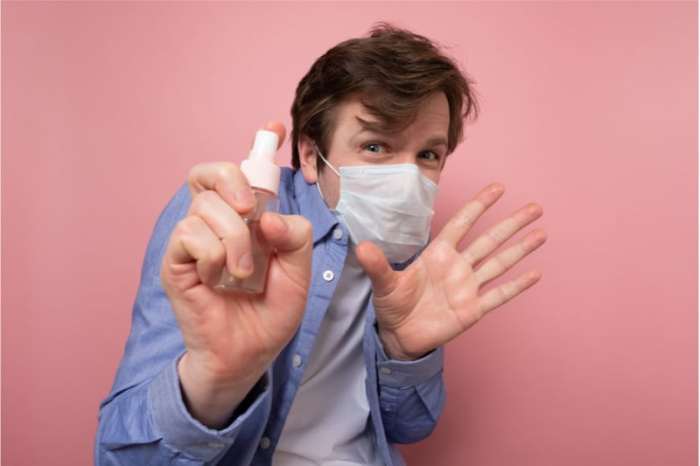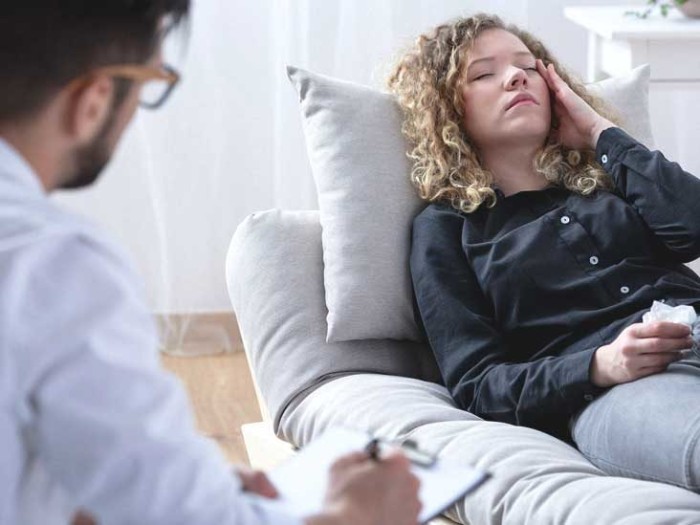
Embark on a journey into the intriguing world of Mysophobia, commonly known as the phobia of germs. Brace yourself for a deep dive into the fears and anxieties surrounding this condition that affects many individuals.
From defining Mysophobia to exploring coping mechanisms, this exploration promises to shed light on the impact of this phobia on daily life and mental well-being.
Phobia of Germs (Mysophobia)
Mysophobia, also known as germophobia, is a type of specific phobia characterized by an intense fear of germs, dirt, or contamination. Individuals with Mysophobia often go to great lengths to avoid situations or objects they believe may be contaminated, leading to significant distress and impairment in daily functioning.
Common Triggers of Mysophobia:
- Touching surfaces in public places
- Shaking hands with others
- Using public restrooms
- Being in crowded spaces
- Handling money or objects touched by others
Impact of Mysophobia on Daily Life and Mental Health:
Mysophobia can have a profound impact on daily life, as individuals may avoid social interactions, public places, or situations that they perceive as contaminated. This can lead to feelings of isolation, anxiety, and depression. In severe cases, Mysophobia can interfere with work, relationships, and overall quality of life.
Coping Mechanisms for Mysophobia
Mysophobia can be challenging to navigate, but there are strategies and coping mechanisms that can help individuals manage their fears and anxieties related to germs.
Strategies for Managing Mysophobia in Daily Routines
Developing a routine can provide a sense of control and predictability, which can help alleviate anxiety. Here are some strategies to incorporate into your daily routine:
- Avoiding excessive use of disinfectants to prevent reinforcing fears.
- Practice relaxation techniques such as deep breathing or meditation to reduce stress.
- Gradual exposure to germs in a controlled environment can help desensitize the fear over time.
- Seeking support from a therapist or support group specializing in anxiety disorders.
Tips for Individuals with Mysophobia to Navigate Social Situations
Social situations can be particularly challenging for individuals with mysophobia. Here are some tips to help navigate social interactions:
- Communicate your concerns with close friends and family members to seek understanding and support.
- Establish boundaries with others regarding hygiene practices without isolating yourself.
- Practice assertiveness skills to communicate your needs effectively in social settings.
Role of Therapy and Professional Help in Treating Mysophobia
Therapy, such as cognitive-behavioral therapy (CBT), can be highly effective in treating mysophobia. Here is how professional help can play a vital role:
- Therapists can help individuals identify and challenge negative thought patterns related to germs and cleanliness.
- Exposure therapy under the guidance of a therapist can gradually reduce the fear response to germs.
- Medication prescribed by a psychiatrist may be considered in severe cases to manage anxiety symptoms.
Understanding the Root Causes

Mysophobia, or the fear of germs, can stem from various underlying causes that contribute to the development of this anxiety disorder. Past experiences, trauma, and the relationship with other anxiety disorders play a significant role in understanding the root causes of Mysophobia.
Past Experiences and Trauma
Individuals who have had traumatic or distressing experiences related to germs or cleanliness in the past may develop Mysophobia as a way to cope with their fear and anxiety. These experiences could range from childhood incidents to more recent situations that have left a lasting impact on the individual’s mental health.
Relationship with Anxiety Disorders
Mysophobia is often linked to other anxiety disorders, such as Obsessive-Compulsive Disorder (OCD) or Generalized Anxiety Disorder (GAD). Individuals who already suffer from anxiety disorders may be more prone to developing Mysophobia as a specific manifestation of their overall anxiety symptoms. The fear of germs and contamination can become a focal point for their anxiety, leading to obsessive thoughts and compulsive behaviors related to cleanliness and avoidance of perceived sources of germs.
Relationship Between Mysophobia and Obsessive-Compulsive Disorder (OCD)
Mysophobia, the fear of germs, is often linked to Obsessive-Compulsive Disorder (OCD), a mental health condition characterized by intrusive thoughts and repetitive behaviors.
Comparison and Contrast of Mysophobia with OCD
- Mysophobia specifically revolves around the fear of germs, while OCD can involve a variety of obsessions and compulsions.
- Individuals with Mysophobia may have a heightened focus on cleanliness and avoidance of germs, whereas individuals with OCD may have various obsessions that drive compulsive behaviors.
- Both Mysophobia and OCD can significantly impact daily life and cause distress to those experiencing them.
Mysophobia as a Symptom of OCD
- Mysophobia can be a specific symptom of OCD, where the fear of germs becomes a central obsession leading to compulsive behaviors like excessive hand-washing or avoidance of certain places.
- Individuals with OCD may develop Mysophobia as a way to cope with their intrusive thoughts and anxiety related to contamination.
Treatment Approaches for Individuals with both Mysophobia and OCD
- Cognitive Behavioral Therapy (CBT) is a common treatment approach that can help individuals with both Mysophobia and OCD challenge their irrational thoughts and behaviors.
- Exposure and Response Prevention (ERP) therapy, a type of CBT, can be particularly effective in helping individuals gradually confront their fears related to germs and contamination.
- Medication, such as selective serotonin reuptake inhibitors (SSRIs), may also be prescribed to help manage the symptoms of OCD and Mysophobia.
SPA AND WELLNESS
Spa treatments play a crucial role in promoting relaxation and enhancing overall well-being. These practices are designed to not only pamper individuals but also to rejuvenate both the body and mind.
Popular Wellness Practices
- Aromatherapy: Aromatherapy utilizes essential oils to promote relaxation, reduce stress, and improve overall well-being. Different scents can have varying effects on mood and emotions.
- Massages: Massages are known to relieve muscle tension, improve circulation, and reduce stress levels. There are various types of massages, each catering to different needs.
- Hydrotherapy: Hydrotherapy involves the use of water in different forms such as hot tubs, saunas, and steam rooms. It can help in relaxation, pain relief, and detoxification.
Benefits of Incorporating Spa Treatments into a Wellness Routine
- Stress Relief: Spa treatments are effective in reducing stress levels and promoting relaxation, which can have a positive impact on overall mental health.
- Physical Benefits: Massages and hydrotherapy can help in relieving muscle tension, improving circulation, and promoting better physical health.
- Mental Well-being: The soothing environment of a spa, coupled with treatments like aromatherapy, can enhance mental well-being and promote a sense of calmness.
- Skin Care: Many spa treatments involve skincare routines that can improve the condition of the skin, leaving it hydrated and rejuvenated.
REPRODUCTIVE HEALTH
Reproductive health is an essential aspect of overall well-being, encompassing physical, mental, and social well-being in relation to the reproductive system. It is crucial for individuals to take care of their reproductive health to ensure a healthy and fulfilling life.Common reproductive health issues can have a significant impact on individuals, affecting their physical health, emotional well-being, and relationships. Issues such as infertility, sexually transmitted infections (STIs), menstrual disorders, and reproductive cancers can pose challenges and require proper management and treatment.
Importance of Regular Check-ups
Regular check-ups with healthcare providers are essential for maintaining good reproductive health. These visits can help detect any potential issues early on, allowing for timely intervention and treatment. It is important to discuss any concerns or symptoms with a healthcare professional to ensure comprehensive care.
- Regular screenings for STIs and reproductive cancers are crucial for early detection and treatment.
- Discussing family planning options and contraception methods with a healthcare provider can help individuals make informed decisions about their reproductive health.
- Seeking support for mental health concerns related to reproductive health issues is important for overall well-being.
Lifestyle Choices for Good Reproductive Health
Making healthy lifestyle choices can significantly impact reproductive health and overall well-being. These choices can help reduce the risk of reproductive health issues and promote optimal functioning of the reproductive system.
- Following a balanced diet rich in nutrients and staying hydrated can support reproductive health.
- Engaging in regular physical activity can help maintain a healthy weight and promote overall well-being.
- Avoiding tobacco, alcohol, and recreational drugs can help prevent reproductive health issues and improve fertility.
- Practicing safe sex and using protection can reduce the risk of STIs and unintended pregnancies.
HEALTH PHOBIAS

Phobias related to health can have a significant impact on an individual’s mental well-being and quality of life. These phobias manifest in various forms, with different triggers and characteristics that can greatly affect how individuals perceive and manage their health.
Hypochondria
Hypochondria, also known as illness anxiety disorder, is characterized by a persistent fear of having a serious medical condition despite medical reassurance. Individuals with hypochondria often misinterpret normal bodily sensations as signs of a severe illness, leading to excessive worry and anxiety.
Nosocomephobia
Nosocomephobia is the fear of hospitals or medical settings. This phobia can be triggered by a negative experience in a hospital, fear of medical procedures, or concerns about contracting an illness from a healthcare facility. Individuals with nosocomephobia may avoid seeking necessary medical treatment due to their fear.
Iatrophobia
Iatrophobia refers to the fear of doctors or medical professionals. This phobia can stem from a negative experience with a healthcare provider, fear of medical procedures, or a lack of trust in the healthcare system. Individuals with iatrophobia may avoid routine medical check-ups or delay seeking medical help when needed.The impact of health phobias on individuals’ mental health and quality of life can be profound.
These phobias can lead to increased levels of anxiety, depression, and avoidance behaviors that interfere with daily functioning. Seeking professional help, such as therapy or counseling, can be beneficial in managing and overcoming health phobias to improve overall well-being.
Closing Summary
As we conclude our exploration of Mysophobia, remember that understanding and awareness are key in dealing with this phobia. Let’s strive for a world where empathy and support overshadow fear and anxiety.
Questions and Answers
What are common triggers of Mysophobia?
Common triggers include touching surfaces in public places, being around sick individuals, and fear of contamination.
How can individuals navigate social situations with Mysophobia?
Individuals can practice good hygiene, use hand sanitizers, and communicate their triggers to friends and family for support.
Is Mysophobia related to Obsessive-Compulsive Disorder (OCD)?
Mysophobia can be a symptom of OCD, but not all individuals with Mysophobia have OCD.

